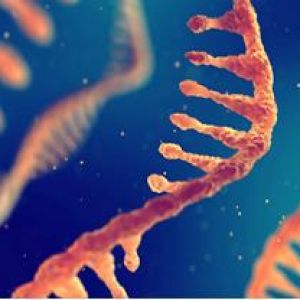Antibody-Mediated ADCC and CDC–Taking Rituximab as an ExamplePosted by Candy Swift on February 7th, 2022 In the fight against disease, two types of immune actions have provided an escalating engine for the development of antibody-based pharmaceuticals: antibody-dependent cell-mediated cytotoxicity (ADCC) and complement-dependent cytotoxicity (CDC). The former refers to the binding of the Fab segment of the antibody to antigenic epitopes of infected cells or tumor cells and the binding of the Fc segment to the Fc receptor on the surface of killer cells (NK cells, macrophages, etc.), which mediate the effect of direct killing of target cells by killer cells. The latter refers to the role of complement in activating the classical pathway of complement system through specific antibody binding to the corresponding antigen on the surface of the cell membrane, resulting in the formation of a membrane attack complex to lyse target cells. Talking about these two effects we have to refer to a long history of oncology drug - rituximab. Rituximab is a CD20-specific antibody, a potent drug for non-Hodgkin\'s lymphoma, which works through ADCC and CDC to kill tumor cells. This article will take rituximab as an example to explain ADCC and CDC action. As a typical IgG antibody, rituximab has a Fab segment for antibody-antigen binding and an Fc segment for binding to Fc receptors and complements. The Fab segment of rituximab is able to bind tightly to human CD20 protein. The Fc segment determines the effector functions of rituximab, including ADCC and CDC. ADCC takes the stage when rituximab binds to tumor cell surface antigens as well as to Fc receptors on the surface of immune effector cells, activating immune effector cells such as NK cells, macrophages, and neutrophils. Once these cells are activated, they release cytotoxic substances such as perforin and granzyme to the surrounding tumor cells or infected cells. The follow-up work is done by these toxic substances, which disrupt the tumor cell membrane, and allow water and electrolytes to accumulate intracellularly rapidly, leading to cell disintegration and destruction, inducing apoptosis, and finally killing the tumor cells. There are several known Fc receptor proteins, although the most critical one for triggering ADCC is the FcγRIIIa receptor, which is specifically expressed in NK cells. Thus, although macrophages, NK cells, and neutrophils are all capable of producing ADCC effects, NK cells are able to come out on top and are considered to be the most important cell group in the process of ADCC. CDC utilizes another strategy, relying on a complex immune system, complement. CDC is the main mechanism of action of rituximab in killing tumor cells: when the complement protein C1q binds to rituximab, it binds to the corresponding antigen on the cell membrane surface to form a complex, initiating the classical pathway of the complement system. Complement C2-C9 is then recruited to form a membrane-attacking complex (MAC) that works in concert to tear tumor cells to pieces. This process is similar to the killing process of perforin in ADCC. The success of rituximab has drawn the attention of researchers on ADCC and CDC, such as trastuzumab and alemtuzumab, which utilize the effects of ADCC. The former is used to treat HER-2-positive breast cancer and the latter is used to treat chronic B-cell lymphocytic leukemia and multiple sclerosis. There are also CD52 antibodies and CEA (carcinoembryonic antigen) antibodies, which utilize the mechanism of CDC, joining this camp, bringing hope of recovery to patients with many diseases. Research and development on ADCC/CDC-enhanced therapeutic antibodies have dramatically increased in the past few years. As the leading service provider in this field, Creative Biolabs offers upstream and early downstream development services on ADCC/CDC antibody process development, covering cell line development, upstream process optimization, scale-up, and downstream process optimization. Like it? Share it!More by this author |


